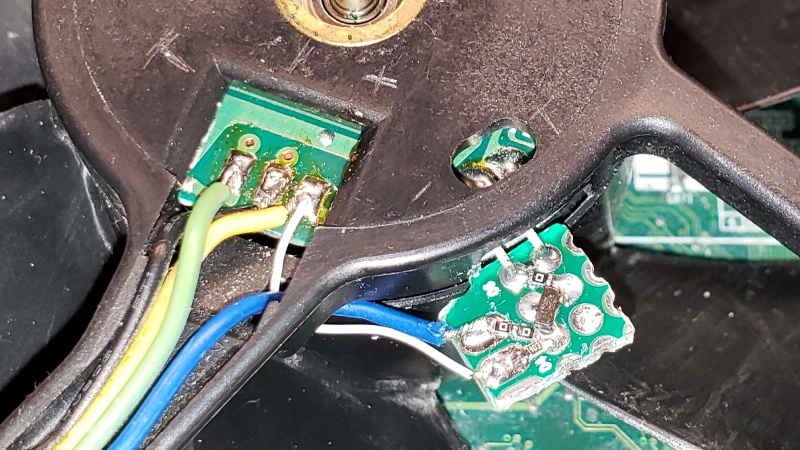Proprietary components are the bane of anyone who dares to try and repair their own hardware. Nonstandard sizes, lack of labeling or documentation, and unavailable spare parts are all par for the course. [Jason] was unlucky enough to have an older Dell computer with a broken, and proprietary, cooling fan on it and had to make some interesting modifications to replace it.
The original fan had three wires and was controlled thermostatically, meaning that a small thermistor would speed up the the fan as the temperature increased. Of course, the standard way of controlling CPU fans these days is with PWM, so he built a circuit which essentially converts the PWM signal from the motherboard into a phantom thermistor. It’s even more impressive that it was able to be done with little more than a MOSFET and a Zener diode.
Unfortunately, there was a catch. The circuit only works one way, meaning the fan speed doesn’t get reported to the motherboard and the operating system thinks the fan has failed. But [Jason] simply disabled the warning and washed his hands of that problem. If you don’t want to use a CPU fan at all, you can always just dunk your entire computer in mineral oil.
















You have that the wrong way around. He replaced a standard 4-wire fan with a properietary 3-wire fan, because he happened to have it lying around.
Three wires, four wires, whatever it takes..
It’s a worry that the person writing this HAD article doesn’t seem to have read, or maybe didn’t understand, the article it refers to… Maybe they should read it (again?) and rewrite this article..
I haven’t tried it myself, but I suspect if he would have just tied the power, ground, and tach lines of the Dell fan into the appropriate pins on the connector for his original one it would have worked fine. Just wouldn’t have PWM control but with the built-in thermistor control wouldn’t be as needed.
Also the Dell fan really isn’t proprietary except for a non-standard connector.
Yes, that does work. Removing the contact shroud on the mb provides enough clearance to use the fan as-is.
KISS – Keep it stupidly simple!
Nice work converting a PWM signal to what the fan expects from the thermister. Although to be honest, I’d just spend the $10 a new 4 wire fan costs.
Seems like a lot of work when you can just run it at full speed all the time. Nothing wrong with it being too cool
Actually there is. Cooling too fast and too low puts physical strain on the larger BGAs.
I can guarantee this is not even close to being an issue with ambient air pushed by a fan.
Flippant. What data do you have?
Wow this is a long URL! However, it the simple conversion from 3 and 4 wire fans to Dell
https://www.google.com/imgres?imgurl=https%3A%2F%2Fvjauj58549.i.lithium.com%2Fcommunity%2Fimage%2Fserverpage%2Fimage-id%2F10789iD5239A0DEBF216CE%2Fimage-size%2Flarge%3Fv%3D1.0%26px%3D999&imgrefurl=https%3A%2F%2Fwww.dell.com%2Fcommunity%2FOptiplex-Desktops%2F780-CPU-fan-pin-out%2Ftd-p%2F6175786&docid=UfQbpFul7y__2M&tbnid=hJ-Y_1W1zImEXM%3A&vet=10ahUKEwibqY60-7vlAhUF86YKHWtkCNoQMwhSKAAwAA..i&w=583&h=366&bih=1097&biw=1190&q=dell%20fan%20wiring&ved=0ahUKEwibqY60-7vlAhUF86YKHWtkCNoQMwhSKAAwAA&iact=mrc&uact=8
I’d like to see an actual working hack to replace the proprietary 6 pins fan in a HP Microserver G8 by a standard PWM 4 pins fan (with speed reporting)
Likely not trivial. The fans have a digital bus, not simply pwm.